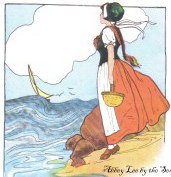Live Smart  | home
| home
 | home
| home
Baby Crib Safety Check List | Preparing for your Babies Arrival Check List | Buying for Baby without breaking the bank | Can Sudden Infant Death Syndrome be prevented? | Solving Baby Sleep Problems - Ferber Method | Using Baby Hand and Foot Print as a gift | 8 Hidden Child Product Dangers | Partners in Parenting - Mom's Working at Home | Supplement & Nutrition Information | Vaccination and its Devastating Effects on Human Health | A Parents Prayer - Successful Prayer Instruction | Autistic Child and Family have their day in court | Aspergers Syndrome Support
Customer Service
Disclosure & Policy
1(888)875-3582
orders, questions, fax
9:00am - 5:00pm CST
|
 Email Invoicing with Paypal,
No Paypal account required
credit card by phone
|
What is Popular?
Herbal Adjustment Joint Pain
BPW and BCW
Blood and Organ Cleansing
CCE-W Bowel cleanse
|
|
High Quality
Thyroid Balancing
Bulk and
single jars
|
Supplements
Spiritual
Health
Pet Corner
Living Green
|
Tea Master
learn how
Pure Herbs
|
Organ
Cleansing
|
Cold Remedies
Articles
and more
|
Herbal Remedies
Instruction
Articles
|
 Young Living
Ancient Biblical Oils
|
Journey Well
 |
 Lymphatic Detoxification through massage and thermatherapy
|
www.blueirissanctuary.com 888-875-3582 Nutritional Consulting ~ Master Herbalist available
Baby Crib Safety Check List
 |
||||
Once your baby has arrived, one of the most important parts of your new life together will be getting a good night’s sleep —
you in your bed, the baby in a safe and comfortable crib. At first, you may want your newborn to sleep in a bassinet by your bed, making it a little easier for breastfeeding moms, but have a crib ready by the time your baby can roll over.
Your baby will spend more time in the crib than anywhere else, so safety is of utmost importance. What makes a crib safe?
* The bars or slats of the crib railing should be no more than 2-3/8" apart, close enough together to prevent your baby’s head from slipping through or getting stuck. That crib in the attic may be a beautiful antique, but it probably does not meet this safety standard. Secondhand older cribs may also have splinters or lead paint as well as slats that are too far apart.
* Cribs with cutout designs along the rail may look pretty, but your baby’s arm or neck could get stuck in them.
* The crib must be sturdy. Your child will sleep in a crib until it’s time to move into a regular bed between the ages of
2 and 3. When shopping for the crib, give it a good shake to see if it wobbles or rattles.
* Construction materials should be stained or painted hardwoods like maple, ash, beech or oak. The use of inferior woods can potentially weaken or warp the slats. Some metal cribs are also very sturdy and secure. All finish materials must be lead free and non-toxic.
* For safety, the dropsides must be at least 9" above the mattress support when lowered. When the side is raised, the top must be at least 26" above the support at its lowest position. You should have no trouble quietly raising and lowering the side rail easily with one hand, since chances are you’ll have a sleeping baby in your arms.
* Make things a little easier on your back by choosing a crib with an adjustable height mattress. A newborn can rest higher in the crib, while a baby who can sit up needs a lower mattress so he can’t climb out. You can change the height of most mattresses by simply raising or lowering the mattress support.
* Check the hardware on the crib for sharp edges or points or anything else that could hurt your baby.
* The mattress should fit snugly into the crib. If you can fit two fingers between the side of the mattress and the crib, it is too small. Keep an eye on foam mattresses; over time, they may break down at the edges and leave gaps. Check the mattress support to make sure there are safety clips that lock the hangers into their notches.
* Use nonflammable and hypoallergenic bumper padding attached to the inside railings of the crib to cushion all four sides and prevent your baby from sticking an arm or leg through the railings. Securely fasten the bumper pads to the sides of the crib in at least six places. Be sure to remove bumper pads when your baby becomes more active.
* Follow assembly instructions carefully. Periodically tighten all nuts, bolts, and screws and check teething rails for cracks. Check the mattress support hooks regularly.
* Don’t place a crib against a window, near curtains or drapery cords, or near furniture that could help your baby climb out.
* Crib toys need to be removed from the crib when baby is sleeping. And remove mobiles when baby is able to grab at objects.
Federal safety guidelines went into effect in 1973, but only since 1991 do most cribs meet all mandatory safety standards
(16CFR part 1508) as set by The Consumer Products Safety Commission (CPSC) and the voluntary standards (ASTM F966 and F1169) as set by the American Society for Testing and Materials (ASTM). The Juvenile Products Manufacturers’ Association (JPMA) certifies cribs that meet the safety standards.
For more information on crib safety and other nursery equipment, contact the Consumer Products Safety Commission at
1-800-638-2772.
Please find the original article and more information about this subject at
http://www.homeandliving.com/DesignAdvice.aspx?Category=BabyCribSafety
 www.blueirissanctuary.com
|
||||
